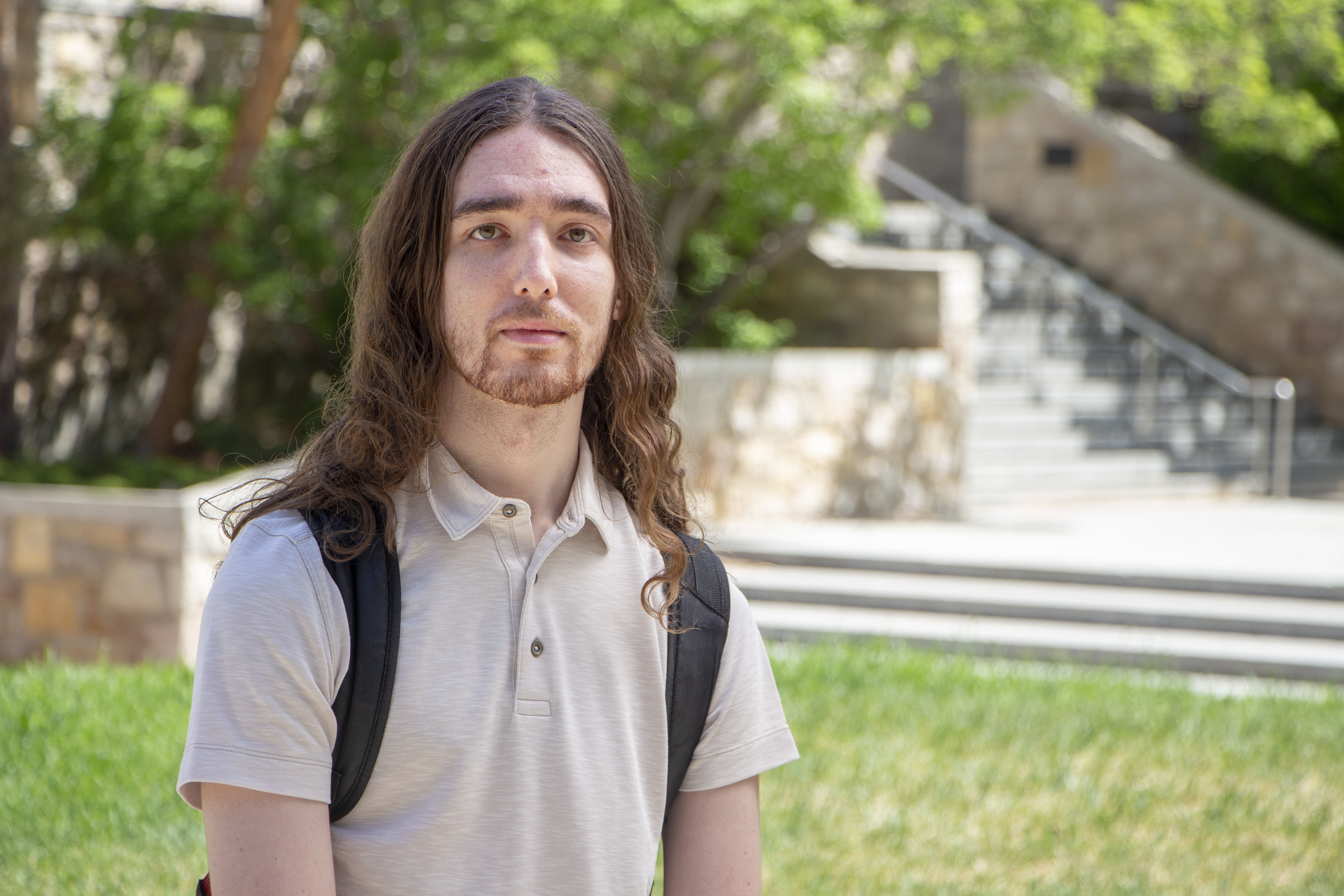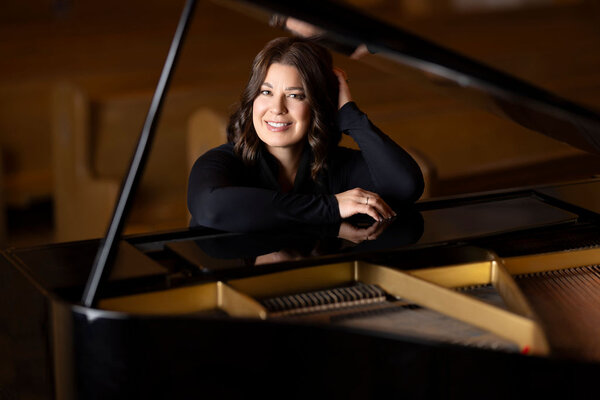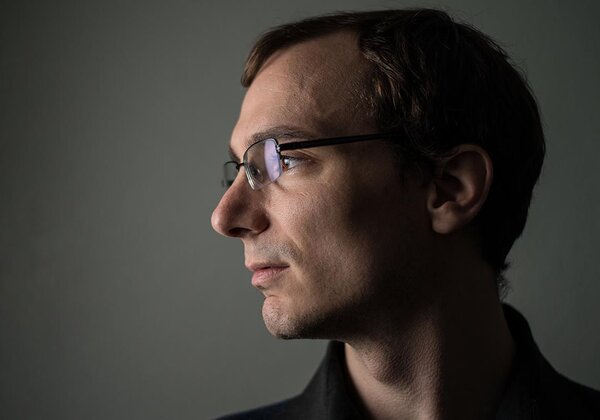
‘An absolutely phenomenal achievement’: USask grad awarded $75,000 to study nanoscience in Europe
Mathematical physics student Scott Greenhorn received two USask degrees during 2019 spring convocation
By Shannon Boklaschuk
A new University of Saskatchewan (USask) graduate is heading to Belgium to study nanoscience after landing a prestigious scholarship worth about $75,000.
Scott Greenhorn received his Bachelor of Science (honours) degree in mathematical physics on June 4 during USask’s 2019 spring convocation ceremonies. On June 7, Greenhorn will become a two-time USask alumnus when he receives a Bachelor of Science in Engineering degree (with distinction), in engineering physics.
Greenhorn, who was raised in Saskatoon and attended St. Joseph High School, began his post-secondary education studying engineering physics in USask’s College of Engineering. He then started studying mathematical physics in the College of Arts and Science to supplement his engineering physics courses.
“(Engineering physics) is a very broad degree covering a lot of subjects in physics, but only allows for two science electives—while I wanted to pursue classes in quantum mechanics, relativity and the mathematical backgrounds of both,” Greenhorn said. “Engineering and physics classes are great, but the focus is often on the scientific results and applications—and I wanted to have a slightly deeper appreciation of the mathematical tools underlying the science.”
In September, Greenhorn will begin graduate studies in the Erasmus Mundus Master Nanoscience and Nanotechnology (EMM-NANO+) program in Europe. The master’s degree program is offered by a consortium of five universities and is coordinated by KU Leuven in Belgium, where Greenhorn will study during his first year. His second year of graduate studies will take place at Université Grenoble Alpes in France.
Studying in Belgium and France was made possible after Greenhorn received a scholarship offered by the European Union to students taking an Erasmus Mundus joint master’s program. The scholarship is valued at 49,000 euros, or about $75,000 CAD.
Greenhorn said he felt “surprised” when he learned he won the prestigious award.
“The entire application was a bit of a long shot,” he said. “I had found the program online and was impressed by the breadth of topics covered within a single program. I had to try to apply, but didn’t think anything would come of it—and I also couldn’t afford to live in Europe for two years, even if I was accepted. The scholarship was really the only way any of this would be possible, so I was also feeling grateful and maybe a bit overwhelmed.”
Dr. Steven Rayan (PhD), who chairs the mathematical physics program in USask’s College of Arts and Science, described Greenhorn’s accomplishment as “an absolutely phenomenal achievement.” Rayan said KU Leuven and Université Grenoble Alpes are internationally respected universities, and receiving $75,000 for a scholarship at the Master of Science degree level is “stratospheric.”
“I can only imagine how much competition Scott had to go through,” said Rayan. “This is a testament to the quality of the students we have in both Arts and Science and Engineering at the U of S. Of course, as an international student with large fees to pay, Scott will benefit from this generous award and, thankfully, will not have to worry financially.”
Rayan said he had the joy of teaching and working with Greenhorn three times—once in Vector Calculus II and twice in the Department of Mathematics and Statistics mathematics honours seminar. Rayan was not surprised to learn that Greenhorn was the recipient of such a prestigious award.
“He has a winning combination of dedication and natural talent,” said Rayan. “His nanoscience (master’s) program will surely be as challenging as it is rewarding. I do believe that his training in mathematical physics and engineering physics at the U of S have left him very prepared for the challenges that are to come. I hope that he will return to Saskatchewan one day to put his talents to work here, but who knows where his path will take him? Wherever that is, I am sure he will continue to be a great success.”
As for his future career goals, Greenhorn said he plans “to play things by ear.” However, “one has only to look around to see that the future of technology is nanoscience, in any field you like,” he said.
“At the U of S, there are groups working in nanotechnology in health sciences, chemistry, physics, electrical engineering, mechanical engineering,” Greenhorn said. “It’s everywhere, and I think the most important results are going to be from interdisciplinary groups that combine the insights from many different backgrounds. I hope the EMM-NANO program will help me 'speak the language' of a wider variety of disciplines so I can be a better contributor to that sort of research.”
As for his education at USask, Greenhorn was appreciative of the wide variety of courses he was able to take—which included classes in the humanities, computer science, chemistry, biology and other areas. He liked building a broad scientific knowledge base, which he hopes will prepare him to do well in a broad nanoscience master’s program, he said.
“While the U of S has many strong scientific programs and it’s impossible to fully undertake them all, I encourage sampling from as many as possible to get an appreciation of all the possibilities that exist even at this one university,” said Greenhorn. “I’ve certainly gained a better appreciation, since I started, of all the research that goes on here after I became more familiar with different departments.”
Rayan said he is “extremely proud” of Greenhorn, and it is “very rewarding” to see USask’s mathematical physics students in high demand from other institutions. For example, three students who graduated alongside Greenhorn have been accepted into mathematics graduate programs at McGill University, the University of Alberta and the University of Toronto—all with full funding.
Another student in the same cohort—who completed two separate USask degrees in honours mathematics and a double honours in physics and biochemistry—will start a doctoral degree in quantum chemistry at the University of Oxford in England in October.
“We’re over the moon with the spectacular performance of our students, the national and international demand for them and the amazing pathways they have access to,” Rayan said.


